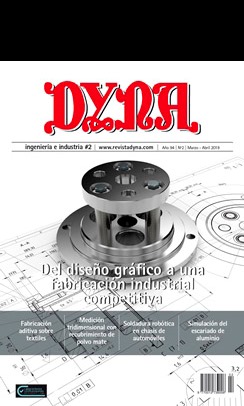NUMERICAL SIMULATION OF THE REAMING PROCESS IN ALUMINIUM 2024-T351 – ANALYSIS OF THE EVOLUTION OF THE MATERIAL STRESS STATE
Keywords:
Reaming, numerical simulation, residual stress, aluminum, escariado, simulación numérica, tensiones residuales, aluminioAbstract
In aircraft assemblies, holes for fastening are critical areas from where fatigue damage can be initiated, especially for metal parts. Depending on the operating conditions of the various stages of the machining process of the hole (drilling, reaming, cold expansion, second reaming), the manufacturers observe significantly different fatigue strength of the structures. To optimize the behavior of the aircraft assemblies, the manufacturers want to understand the impact of the whole machining process of the hole on the material characteristics of the part. They investigate particularly the residual stress state in the hole edge zone which can be significantly different depending on the operating conditions. This paper investigates the influence of the reaming process in an aluminum 2024-T351 part with initial material state not clean of mechanical stress. Indeed, before the final reaming, the parts undergo at least a drilling operation, and sometimes a cold expansion operation. For this study, in collaboration with Airbus, the simulated reamed part has been pre-stressed by the cold expansion process. Both processes are simulated using a finite element model with Abaqus. The implemented strategy to simulate the reaming process is based on the progressive deactivation of mesh elements. The obtained results show a low relaxation of the circumferential and radial residual stresses in the part during the reaming simulation. Keywords: Reaming, numerical simulation, residual stress, aluminumDownloads
Published
2019-03-01
Issue
Section
ARTICULOS

